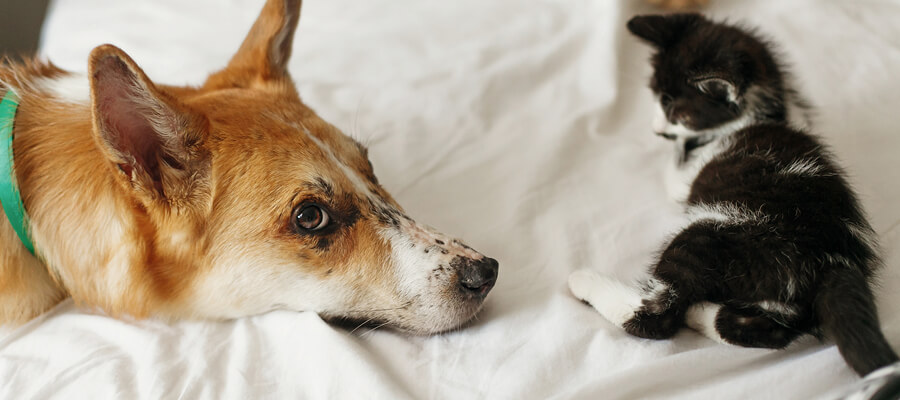Bringing home a new puppy or kitten is exciting, especially for kids. However, it's important to remember that these furballs are curious explorers, and they can get into all sorts of mischief if you're not prepared. Puppy- and kitten-proofing your house and yard is important to ensure their safety and create a harmonious living environment for you and your new furry friend.
- Secure Hazardous Areas: Start by identifying areas of your home and yard that could be potentially dangerous for your new pet. This includes places like garages, laundry rooms, or workshops where chemicals, sharp objects, and small items that can be swallowed may be present. Secure these areas with gates, locks or by moving hazardous materials out of reach.
- Remove Choking Hazards: Puppies and kittens, like babies, love to put everything in their mouths. Remove small objects like hair ties, coins, and small toys that can be choking hazards. Pay special attention to electrical cords, which can be tempting to chew.
- Remove Toxic Plants: Many common houseplants can be toxic to pets. Research which plants are safe and which are not, then either remove or relocate any potentially harmful ones. Consider creating a designated pet-friendly space with safe plants for them to explore.
- Cover Trash Bins: Little baby canines and felines have an uncanny knack for finding trash and turning it into a treasure trove of potential hazards. Trash cans with secure lids are best, or store trash cans behind a closed door.
- Keep Human Food Away: Keep human food out of reach, as many items it can be toxic to pets. This includes chocolate, grapes, onions, and certain sugar substitutes. Plus, you don't want your pet to start begging at the table at every meal.
- Lock Up Medications: Human medications are not pet medications, so storing them in a secure place where your pet can't access them is important.
- Check for Small Spaces: Puppies and kittens can squeeze into surprisingly small spaces. Inspect your home for any openings, gaps, or holes where your pet could get stuck or escape, especially in the backyard.
- Block Off Staircases: Until your pet is older and more coordinated, it's best to block off staircases with gates. This helps prevent accidents and injuries to your new pets.
- Secure Trash and Recycling Bins Outside: Ensure outdoor bins are secure to prevent your pet from rummaging through them and potentially ingesting harmful items.
- Inspect Your Yard: Your yard is an extension of your home, so ensuring it's safe for your new pet is important. Remove any sharp objects, rocks, or plants that could be harmful. Also, check for any holes or gaps in fences that could allow your pet to escape.
- Supervise and Train: Never leave your puppy or kitten unsupervised in an area where they could get into trouble. Training and positive reinforcement are key to teaching them what's off-limits. Also, crate training early can help keep your pets safe while you are out.
- Provide Safe Toys and Entertainment: Offer a variety of safe toys and chew items to keep your pet mentally stimulated and to redirect their natural curiosity.
Puppy- and kitten-proofing your house and yard requires a bit of effort, but it's well worth it for the safety and well-being of your new pet. Remember that each pet is unique, so be observant and adjust your pet-proofing strategies accordingly. Your new furry friend can grow, learn, and explore with confidence and happiness in a secure environment.
For even more tips, check out Dr. Willis’s video on getting your home and yard ready for a new furry family member.
